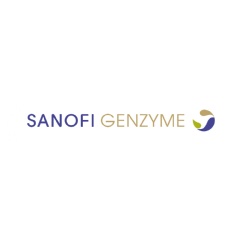Easing the Burden for People with Hemophilia
Latest treatments, advanced research hold promise of full, active lives for patients
As recently as five years ago, effectively managing hemophilia meant frequent therapy infusions to prevent uncontrolled bleeding, limitations on physical activities in order to guard against injury and, as adults, chronic and severe pain from accumulated joint damage that, in some cases, led to disability.
Today, the outlook for people living with this rare, genetic bleeding disorder is significantly brighter. The introduction of the first extended half-life factor therapies, now part of Sanofi’s portfolio, marked the starting point in a scientific revolution in the way hemophilia is and can be treated.
“There’s a lot of good news for the hemophilia community,” said Rob Peters, the head of Rare Blood Disorders research for Sanofi, who has been researching hemophilia treatments for nearly two decades. “At Sanofi, we have a really deep understanding of the coagulation system and a long legacy of working with the community, which has enabled us to design new treatments that mean that people with hemophilia today have every expectation of being able to live full, active lives.”
Living with Hemophilia
For someone with hemophilia, their blood doesn’t clot normally, which can cause spontaneous bleeds, prolonged bleeding after injury and, over time, pain and significant joint damage. Treatment requires intravenous replacement of the missing coagulation factor, proteins in the blood that help it to clot properly. Factor replacement therapy is the mainstay of hemophilia care, as it provides what is deficient in the body.
However, factor therapy only stays in the body for so long. This “half-life” determines how frequently a person with hemophilia must infuse. For short-acting therapies, this could mean several infusions each week for patients on a prophylactic regimen, depending on the type of hemophilia – a tremendous burden.
Which is why Sanofi’s extended half-life therapies, when introduced, were considered the first significant advances in hemophilia treatment in nearly two decades. They remain circulating in the blood longer than standard factor therapies because Peters and his team optimized the use of Fc Fusion technology into the molecular design, which meant patients were able to extend the time between doses. Sanofi continues to study these therapies to determine other ways in which they can help improve the lives of people living with hemophilia today.
New approaches on the horizon
Today, Peters’ steadfast commitment to improving hemophilia care drives him and his Sanofi colleagues to continue to pursue new types of hemophilia therapies. Their pipeline includes therapies with different mechanisms of action with the potential to address areas of unmet needs in hemophilia.
One such investigational therapy is BIVV001, a novel recombinant factor VIII therapy designed to extend protection from bleeds with prophylaxis dosing of once weekly for people with hemophilia A. Early clinical results show a single 65 IU/kg dose had an average half-life of 43 hours, significantly higher than conventional factor VIII and achieved an average factor activity of 17% at seven days post infusion.
“In the past, prophylaxis regimens for hemophilia A tried to maintain 1% levels with 3-4 infusions every week, which greatly improved clinical outcomes, but we are now realizing that subclinical joint bleeds may be occurring when people are below 15%,” Peters said. “It’s incredibly exciting to see that with BIVV001, we may be able to both reduce the burden of treatment while improving the level of protection.”
Fitusiran, another investigational therapy, takes an entirely different approach. Rather than replacing missing clotting factors, Fitusiran “turns off” the production of a protein that inhibits clotting factors. Fitusiran is designed to rebalance hemostasis in patients with hemophilia and generate enough thrombin to stop bleeds before they occur. Fitusiran is a novel RNA interference therapy currently in late-stage development with the potential to offer a single subcutaneous, monthly dose to treat people with hemophilia A or B, with or without inhibitors.
“Fitusiran works differently to accomplish the same goal as factor therapy: increase procoagulant activity to prevent bleeds from happening,” explained Peters.
What’s in the Lab
Sanofi’s researchers are also working on gene therapies that would change the way a patient’s body is “programmed” to produce the needed clotting factors. This novel approach uses a type of retrovirus known as a lentivirus as a vector, in order to permanently deliver the factor-creating DNA to a patient.
“You would do an injection once, the viral vector would go to the liver, and the cells there would begin to express the clotting factor,” he said. “The goal would be to have the expression be permanent, meaning the body would continue to produce clotting factors it had once been unable to make.”
Though this is approach is still years away, there is already data from laboratory studies to show that it could work, including the potential to treat pediatric patients that cannot be treated with current gene therapies in the clinic, and more studies are planned.
“We’re trying to improve the standard of care through our leading extended half-life therapies and, at the same time, other new approaches and modalities,” Peters said, “and, eventually, cures. We embrace that challenge.”
( Press Release Image: https://photos.webwire.com/prmedia/5/243243/243243-1.jpg )
WebWireID243243
This news content was configured by WebWire editorial staff. Linking is permitted.
News Release Distribution and Press Release Distribution Services Provided by WebWire.
